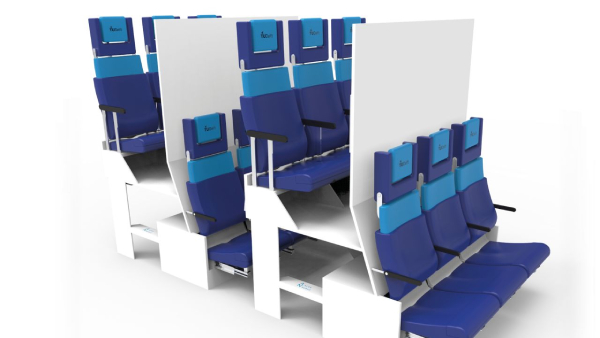
When it comes to design and accessibility, an often quoted statistic is from a 2020 case study by Deque, a web accessibility software company. The study revealed the fact that 67 percent of accessibility defects stem from design. While the study refers to virtual accessibility, it could’ve easily been about physical products that we can hold in our hands.
Design has a powerful impact on everyone’s lives. Unfortunately, it’s often the case that designers and companies only see the majority—the abled-bodied person who has all their senses working, can walk, and live independently without the need for specialised equipment or tools. Unless it's for a specialised accessibility project, rarely do designers consider the 1.3 billion people with disabilities who make up 16 per cent of the world’s population.
In New Zealand, 24 per cent of the country’s population, or 1.1 million people were identified as people with disabilities in 2013. Fortunately, the Office of Disability Issues has come up with a long-term disability strategy to address issues and barriers faced by persons with disabilities. One of which is to investigate opportunities for accessibility through new technologies. In this regard, there are opportunities to create practical solutions using industrial design. Christchurch, for one, is home to professional product design companies that are ready to develop products that could uplift communities with disabilities.
What should an industrial designer consider when designing for accessibility? Before we answer this question, let’s start with the basics—what is inclusive design?
Defining Inclusive Design
Inclusive design goes beyond meeting the needs of the average user. It strives to cater to a diverse range of individuals, including those with disabilities. It’s a concept that closely relates to universal design. This design principle aims to create versatile products, accommodating users with varying abilities.
Incorporating Accessibility and Inclusivity in Industrial Designs
1. Consider User-Centered Design
User-centered design is the keystone to crafting products that truly meet the needs of the users. By conducting thorough research, engaging in user interviews, and employing usability testing, industrial designers can gain insights that inform the design process. This approach ensures that the end product is not just a creation but a solution that enhances the user experience.
For instance, in the development of the Dot watch for the visually impaired, the design team conducted extensive research and interviews with potential users, experts, and stakeholders to understand the challenges and opportunities of using a smartwatch for people with visual impairments. Instead of relying solely on their expertise, the team involved the users in every stage of the design process, from ideation to prototyping to testing, to ensure that the product met their expectations and preferences.
2. Employ Universal Design Principles
To truly make accessible designs, designers need to incorporate universal design principles that emphasise flexibility, adaptability, and simplicity. In doing so, industrial designers can create products that transcend individual differences. A door handle, for instance, can be designed to be easily grasped by a variety of hand shapes, which accommodates users with different physical abilities.
Other examples of products that had universal design principles in mind are smartphones, ergonomic chairs, automatic sliding doors, and accessible bathrooms. For the most part, these are items that nearly everyone in the population can use and benefit from.

3. Prioritise Ergonomics
Ergonomics plays a pivotal role in designing products that are comfortable and easy to use. Industrial designers need to consider the diverse physical abilities of users. From seating arrangements to handheld devices, ergonomic design ensures that products enhance usability and cater to the unique requirements of each user.
One of the challenges in designing for people with disabilities is their sheer diversity. Ikea’s ThisAbles campaign in 2019 attempted to address this issue by producing free-to-download 3D printable accessories for their most popular furniture pieces. Each accessory is designed to address the specific needs of persons with disabilities, such as a bigger light switch for a lamp or a wider door handle for a closet.
4. Choose Accessible Materials and Interfaces
Material choices and interface design directly impact accessibility. That’s why tactile, user-friendly materials coupled with clear markings on interfaces may provide a more accessible user experience. Moreover, considerations such as texture and contrast become crucial for users with visual or tactile impairments. This ensures they can interact with products effectively.
The design of the Xbox Adaptive Controller demonstrates this perfectly. Specifically designed to be inclusive for gamers with limited mobility, the device features large programmable buttons and 3.5mm jacks to accommodate a wide range of external assistive switches. In all, the choice of materials for the buttons and the overall construction ensures that users with varying motor abilities can interact with the controller comfortably.
5. Design Clear and Intuitive Controls
Intuitive controls and clear labelling are the backbones of user-friendly interfaces. To this end, consistent layouts and straightforward instructions are needed to make products more accessible, particularly for users with cognitive challenges.
A microwave with clearly labelled buttons or a smartphone with an easily navigable interface are examples of how clear controls enhance accessibility.
To achieve a more accessible future for all, everyone needs the help of designers, engineers, and other professionals who develop the products that people use every day. After all, inclusivity is not just a buzzword or design philosophy but a transformative approach that enriches the lives of users, especially those with disabilities.















































